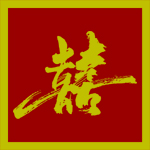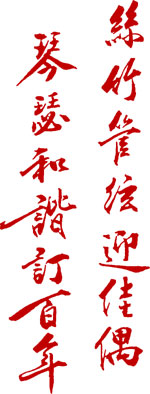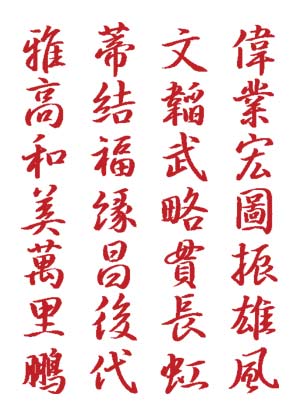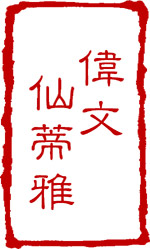|
Our wedding will see a
combination of several different cultural influences - Wedding Tea Ceremony (Chinese) Although we may not feature
them during our wedding, you can read more about In addition, we present translations and
explanations for some of the
Chinese symbols |
||
|
The tea ceremony is a Chinese wedding tradition where the bride and groom show their respect to their elders, especially acknowledging the importance of their parents and thanking them. Many believe that the Chinese wedding tea ceremony probably has its origins in the Song Dynasty (960-1279 AD), a period known mostly for its refinement of tea. After the wedding ceremony, the newlyweds serve tea, inviting the groom's elders to drink tea by addressing them by formal title, e.g. first uncle or third aunt. As a sign of respect, most couples kneel as they do so to express gratitude for their parents' love. The tea contains lotus seeds and two red dates. The ancient Chinese believed that putting these items in the tea would help the newlyweds produce children early in the marriage and every year, which would ensure many grandchildren for their parents. The words "lotus" and "year", "seed" and "child", and "date" and "early" are homophones - i.e. they sound the same but carry different meanings in Chinese. Also, the sweetness of the special tea is a wish for sweet relations between the bride and her new family. [ Note: During the banquet, part of the dessert will also contain red dates and lotus seed. ] The general rule is to have the woman on the left side and the man on the right side. The people being served will sit in chairs, while the bride and groom kneel. For example, when the newlyweds serve tea to the groom’s parents, the bride would kneel in front of her father-in-law, while the groom would kneel in front of his mother. The groom holds one cup with two hands and gives one cup to one person and then another to the other person. At the same time the bride does the same. The newlyweds serve tea in order, starting with the groom’s parents then proceeding from the oldest family members to the youngest, e.g. the groom’s parents, then his paternal grandparents, then his maternal grandparents, then his oldest uncles and aunts, and all the way to his older brother. In return, the newlyweds receive lucky red envelopes (“lai see”, which means “lucky”) stuffed with money or jewellery. |
||
|
The wedding banquet offers an opportunity to repay past kindnesses of family members and friends. It is often seen as a way to renew the good fortune, respect and happiness of the whole family. As many as twelve courses are served during the couple’s banquet. Abundance is the operative word, so be prepared for a long, fun-filled evening where you’ll eat up a storm. |
||
|
||
|
||
|
||
|
||



